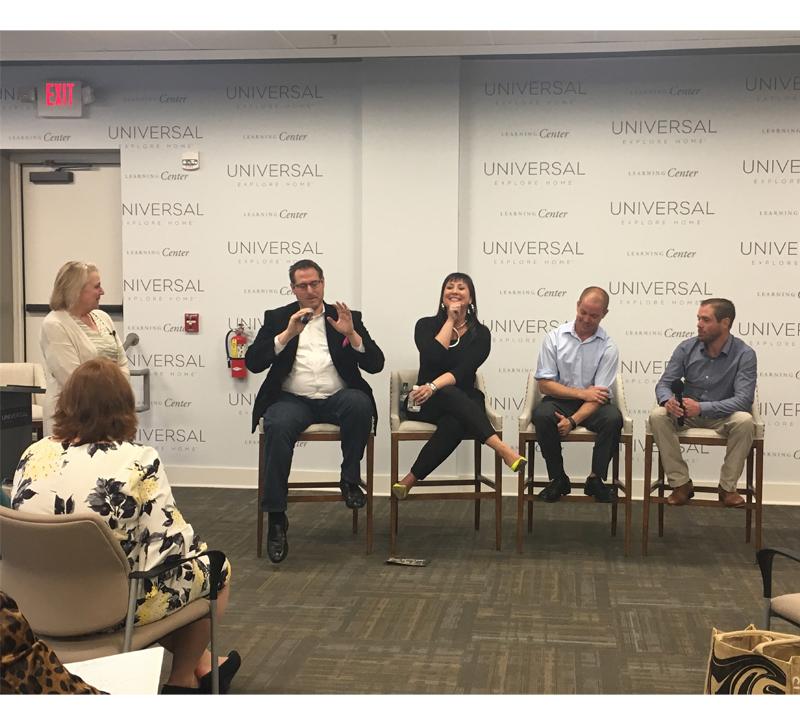At this spring’s High Point Market, we hosted a panel with Universal Furniture on how designers, architects and builders can work together effectively on custom projects. We didn’t want our readers to miss out on the insights shared! Here are a few takeaways from the panel.

Husband and wife team John and Theresa Dorlini co-founded CIRCLE Design Studio in Roanoke, VA, where Theresa is Principal Interior Designer/Owner and John is Principal Architect. The full-service interior design and architecture firm offers custom solutions for commercial and residential interiors.

Brothers Phil and Andrew Travars run Travars Built Homes, where they design and build custom homes across central North Carolina. Phil is a general contractor, and Andrew’s primary focus is on custom home design/build.
Collaborate early
Collaboration and communication between architects, builders and designers early on is crucial. Theresa Dorlini and Andrew Travars agreed that a key part of that collaborative relationship between the client, designer, and builder is sharing information and specifics on the client’s vision of the home from the outset.
Andrew emphasized how important it is for him to see things like mood boards and products tagged on Pinterest or Houzz so he can make sure he’s on the same page as the designer and keep the project within the budget constraints, especially for items like lighting and appliances. “We want to know what you think you’re going to get when we actually build the house,” Andrew said. “We want to see those photos very early on so that when [the client] is going to a designer, that designer has a budget they can work with.” Theresa echoed this, noting that a builder who asks these questions and cares about the images you’re tagging as a designer will make a good partner on a project.
Compromise is key
For Phil Travars, the working relationship between designer, builder, architect and client all comes down to compromise.
“It’s give and take,” he said. “At the end of the day, we’re able to come up with something that works for everybody. It might take a little bit longer, but where there’s a will there’s a way and we’ll find a solution that’s acceptable to everybody involved.”
Part of finding that sense of compromise and balance is respecting and appreciating what each party brings to the table. “We all have this different filter that we’re bringing,” John Dorlini said. He described how the interior designer has a gift for creating a mood in a space; the architect is concerned with safety and form; and the builder is focused on materials, methods and constructability. He said when looking for an architect to work with, find one who respects and understands the unique skills you offer as a designer.
Be transparent about the budget
Staying on budget is key to client satisfaction with a project, and being open about money throughout the process is the only way to keep everyone on the same page. Theresa said if you take the approach that “money” is not a bad word and prioritize transparency, you’ll have a better relationship with your client and with contractors. “You have to have those conversations,” she said. “Make budget an early discussion.”







